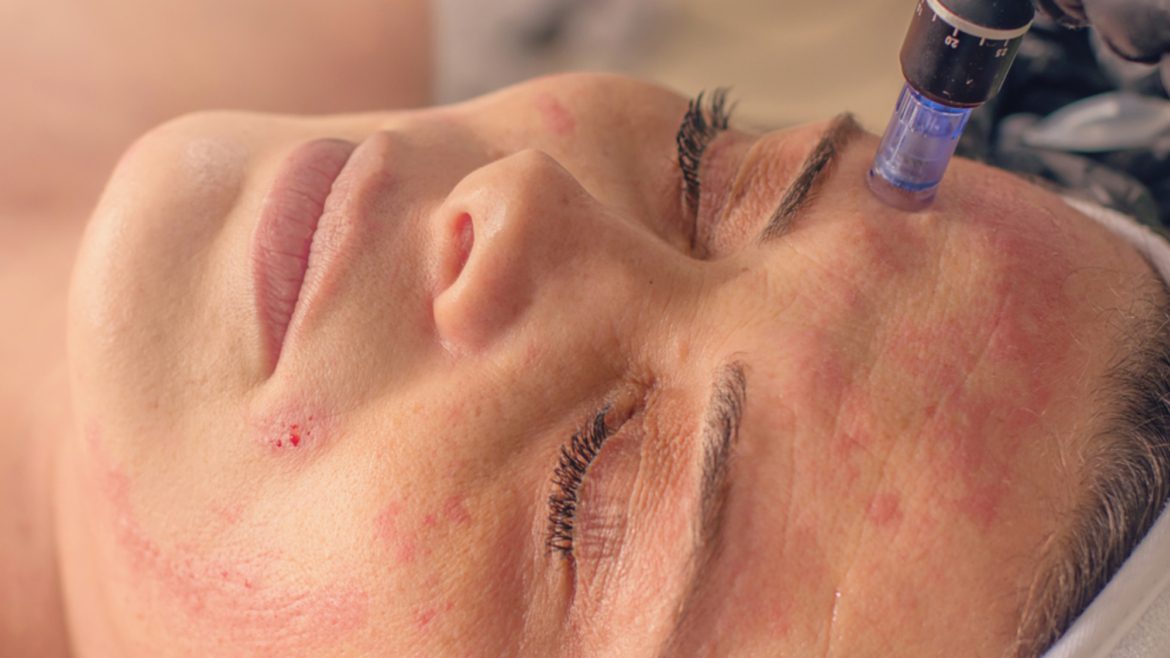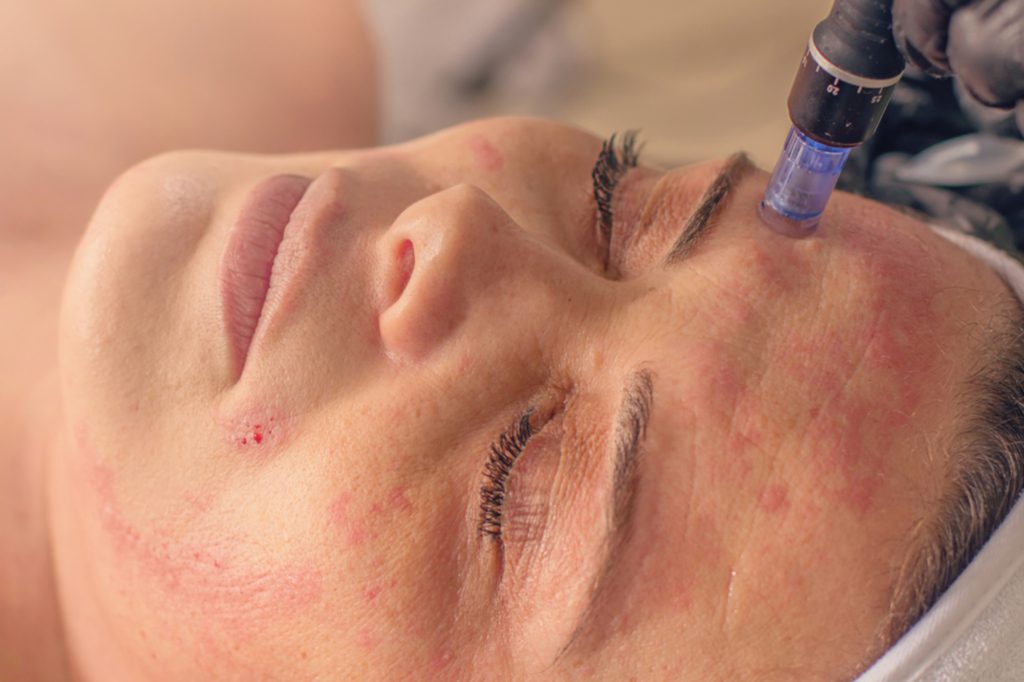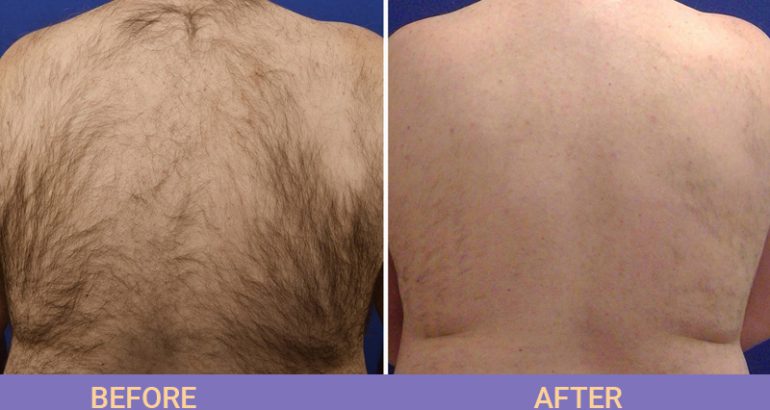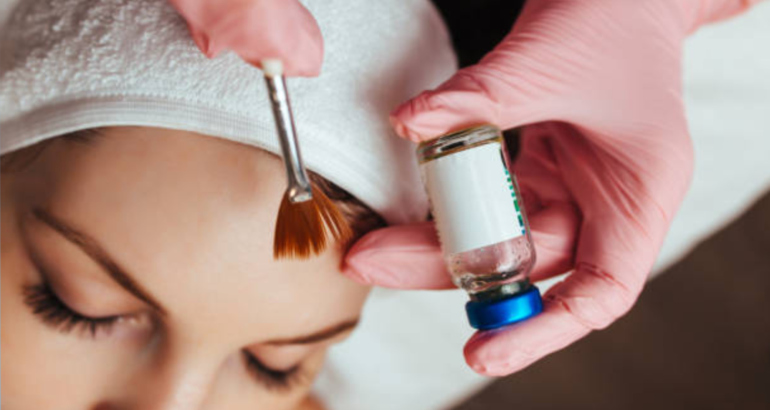What is microneedling?
Microneedling, medically referred to as collagen induction therapy, is a cosmetic technique employing small, sanitary needles to induce micro-injuries in the skin. These minute injuries prompt the body’s innate healing process, culminating in heightened collagen and elastin generation. This can yield refined skin texture, enhanced firmness, and decreased visibility of scars, wrinkles, and other skin irregularities.
Do you have microneedling before and after results?



What machine does the doctor use for microneedling?
Employing the FDA-approved Rejuvapen NXT, we concentrate on treating peri-orbital wrinkles. This streamlined process is quick, nearly pain-free, and involves minimal recovery time. The advanced technology of Rejuvapen NXT® ensures remarkable results and economic advantages.
What are the common areas to treat with microneedling?
- Face: Microneedling is a popular choice for addressing fine lines, wrinkles, acne scars, enlarged pores, and irregular skin tone.
- Neck: This method can improve the texture and resilience of the skin on the neck area.
- Décolletage (Chest): Frequently utilized to reduce sun damage, fine lines, and wrinkles on the chest.
- Hands: Microneedling effectively revitalizes the skin on the hands, minimizing the appearance of age spots and fine lines.
- Stretch marks on the abdomen, hands, and legs: This treatment is a viable option for reducing the visibility of stretch marks. Stretch marks, scientifically known as striae, occur when the skin undergoes rapid expansion or contraction, causing the collagen and elastin fibers to tear. The procedure involves creating controlled micro-injuries in the skin, kickstarting the body’s natural healing process, and stimulating collagen and elastin production. This, in turn, improves the texture and appearance of stretch marks.
What are the common conditions treated with microneedling?
- Addressing Acne Scars: This technique helps improve the texture of acne scars by stimulating collagen production and refining the skin’s surface.
- Diminishing Wrinkles and Fine Lines: It effectively reduces the appearance of fine lines and wrinkles, particularly those associated with the aging process.
- Managing Hyperpigmentation: This method assists in achieving a more uniform skin tone, reducing the visibility of dark spots and hyperpigmentation.
- Smoothing Uneven Skin Texture: It targets concerns related to rough or irregular skin texture, resulting in a smoother complexion.
- Refining Stretch Marks: This approach can be utilized to improve the appearance of stretch marks by promoting collagen production in the affected areas.
- Minimizing Large Pores: It aids in reducing the appearance of enlarged pores. It’s crucial to highlight that this procedure should only be administered by a qualified and licensed professional like Dr. Anuja Garg. Depending on individual concerns and goals, it may be complemented with topical serums or additional treatments for enhanced results. We strongly recommend using ZO skincare products during and after treatment. As with any cosmetic procedure, seeking advice from a certified healthcare provider or dermatologist is essential to determine if this treatment aligns with your needs and skin type. They can also provide insights regarding potential risks and side effects.
How many microneedling treatments are needed to treat these conditions?
The number of sessions required to address specific skin concerns effectively can vary based on factors like their severity, the individual’s skin type, and how their body responds to the treatment. As a general guideline:
- Acne Scars: Mild to moderate cases may benefit from 3 to 6 sessions spaced 4 to 6 weeks apart. More severe scarring may require additional sessions.
- Wrinkles and Fine Lines: Typically, 3 to 6 sessions spaced 4 to 6 weeks apart are advised. Long-term maintenance sessions may be recommended for sustained results.
- Hyperpigmentation: Noticeable improvement often emerges after 3 to 6 sessions spaced approximately 4 to 6 weeks apart. Some individuals may potentially require ongoing maintenance.
- Uneven Skin Texture: Visible enhancement may be observed after 3 to 6 sessions spaced 4 to 6 weeks apart.
- Stretch Marks: Addressing stretch marks can be more complex, and outcomes may vary. Generally, a series of 3 to 6 sessions with 4 to 6 weeks between sessions is suggested.
- Large Pores: A series of 3 to 6 sessions spaced 4 to 6 weeks apart can aid in reducing the appearance of enlarged pores.
It’s essential to note that individual responses differ, with some experiencing improvement after fewer sessions while others may require more. Adhering to the advice of a qualified healthcare provider or dermatologist, who can evaluate your specific needs and oversee your progress, is crucial. Additionally, maintenance sessions may be recommended after completing a treatment series to uphold the achieved results. Always seek personalized advice and treatment planning from a healthcare professional.
Shall I consider microneedling with or without PRP?
Using Platelet-Rich Plasma (PRP) in conjunction with microneedling entails the application of a highly concentrated platelet solution derived from the patient’s own blood. This combined method is believed to enhance the benefits of the treatment. Now, let’s delve into the differences between microneedling with and without PRP:
Microneedling without PRP
Skin Goals and Concerns: Microneedling is suitable for mild to moderate skin issues. If you have more significant concerns or desire enhanced results, microneedling with PRP is often recommended.
Budget Consideration: Keep in mind that microneedling with PRP tends to be pricier due to the inclusion of the PRP component. Make sure to factor your budget into your decision-making process.
Professional Consultation: Consulting with a certified healthcare provider or dermatologist is essential. They can evaluate your specific skin condition, discuss your objectives, and recommend the most suitable treatment plan.
Ultimately, both microneedling options with or without PRP can be effective treatments. The choice hinges on individual factors and desired outcomes. Consulting with a qualified professional is crucial to determine the best option for you.
Microneedling combined with PRP
This procedure follows a mechanism where microneedling creates micro-injuries in the skin, followed by applying PRP rich in growth factors. This combined approach aims to stimulate collagen production and expedite healing, enhancing the benefits of microneedling.
The advantages encompass all the benefits of standalone microneedling, with the potential for accelerated recovery and healing and heightened collagen production due to the introduction of growth factors. The recovery period is similar to microneedling alone, and some individuals may experience slightly faster healing thanks to PRP.
In terms of cost, microneedling combined with PRP generally comes at a higher price point than microneedling due to the added expenses associated with PRP preparation and application.
Choosing between the two
Consider your skin goals and concerns when choosing between the two. Microneedling is suitable for mild to moderate skin issues while microneedling with PRP is often recommended for those with more significant concerns or a desire for enhanced results. Additionally, factor in your budget, as microneedling with PRP tends to be pricier. Consult with a certified healthcare provider to evaluate your specific skin condition, discuss your objectives, and receive recommendations for the most suitable treatment plan. Ultimately, both microneedling options can be effective, with the choice depending on individual factors and desired outcomes. Consulting with a qualified professional is vital to determine the best option for your needs.
How does PRP enhance the collagen production?
Platelet-rich plasma (PRP) is rich in platelets, essential tiny blood cells crucial for the body’s natural healing process. When administered in treatment, PRP stimulates collagen production through various mechanisms:
- Growth Factor Release: PRP contains vital growth factors like platelet-derived growth factor (PDGF), transforming growth factor-beta (TGF-β), vascular endothelial growth factor (VEGF), and insulin-like growth factor (IGF), which play a pivotal role in cell repair and regeneration.
- Stimulating Cell Proliferation: PRP’s growth factors activate fibroblasts, producing collagen and other essential components of the extracellular matrix, leading to increased collagen synthesis.
- Angiogenesis: VEGF in PRP promotes the formation of new blood vessels, enhancing the delivery of oxygen and nutrients to the skin, which supports collagen production.
- Matrix Synthesis: PRP encourages the production of vital extracellular matrix components such as collagen, elastin, and hyaluronic acid, crucial for the structural integrity and elasticity of the skin.
- Anti-Inflammatory Effects: PRP contains anti-inflammatory proteins, establishing an environment conducive to collagen production by reducing skin inflammation.
- Accelerated Healing: PRP’s growth factors expedite tissue regeneration, including collagen fibers, facilitating the healing process.
In summary, PRP serves as a natural catalyst for the body’s collagen production. When combined with treatments like microneedling, it can lead to elevated skin rejuvenation, refined texture, and reduced appearance of fine lines, wrinkles, and scars. It’s important to note that the effectiveness of PRP may vary based on factors like its quality, concentration, and application technique. Consulting with a certified healthcare provider or dermatologist is crucial for achieving optimal results.
How does collagen help with skin tone?
Collagen, an inherent structural protein found in the skin and various connective tissues, plays a pivotal role in upholding skin tone, texture, and elasticity. Here’s how collagen contributes to skin tone:
- Provides Structural Support: Collagen fibers create a supportive network in the skin’s middle layer, the dermis, ensuring structural integrity and firmness while preventing sagging.
- Maintains Skin Elasticity: Collaborating with elastin fibers, collagen imparts elasticity to the skin. Elastin allows for stretching and returning to its original state, while collagen establishes the foundational structure.
- Enhances Skin Texture: Collagen fosters a smooth and uniform skin surface. Adequate collagen levels result in a plump, soft, and supple appearance.
- Diminishes Wrinkles and Fine Lines: Optimal collagen levels fill the gaps between skin cells, reducing the visibility of fine lines and wrinkles.
- Boosts Hydration: Integral to the extracellular matrix, collagen aids in retaining moisture, ensuring well-hydrated skin for a radiant complexion.
- Facilitates Wound Healing: Collagen participates in the healing process, offering a scaffold for new tissue growth and supporting granulation tissue formation, which is critical for effective recovery.
- Enhances Skin Resilience: Strengthening the skin, collagen fibers fortify it against damage from external factors such as UV rays, pollution, and environmental stressors.
Natural collagen production wanes as we age, diminishing skin tone, elasticity, and firmness. This progression leads to wrinkles, fine lines, and sagging skin. External factors like sun exposure, smoking, and poor diet can expedite collagen breakdown.
To bolster healthy collagen production and preserve skin tone, individuals may consider practices like maintaining a balanced diet rich in collagen-boosting nutrients (such as vitamin C and amino acids), using topical skincare products infused with collagen-enhancing elements, and exploring treatments like microneedling or laser therapy that invigorate collagen synthesis. Consulting with a dermatologist or skincare professional ensures tailored recommendations based on individual skin requirements.
What are the risks involved with microneedling?
Microneedling, when administered by a trained and licensed professional, is generally considered a safe procedure. However, like all cosmetic treatments, it’s important to be aware of potential risks and side effects, which may include:
- Redness and Swelling: Mild to moderate redness and swelling are common post-procedure and typically resolve within a day or two.
- Bruising: In some cases, bruising may occur, particularly in individuals with sensitive skin or those prone to bruising.
- Pain or Discomfort: The process involves fine needle punctures, which can cause discomfort. Topical numbing creams are often applied to minimize pain.
- Skin Sensitivity: Those with sensitive skin may experience heightened sensitivity following the treatment, which usually subsides shortly.
- Infection: While rare, there is a small risk of infection if proper sterilization procedures are not followed.
- Pigment Changes: Microneedling can stimulate melanin production, potentially leading to temporary hyperpigmentation, especially in individuals with darker skin tones.
- Scarring: Incorrect procedure execution or inadequate post-treatment care may pose a risk of scarring.
- Allergic Reactions: Some individuals may have allergies to topical products or serums used during or after the procedure.
- Acne Flare-Up: In rare cases, individuals with acne-prone skin may experience a temporary exacerbation following the treatment.
- Herpes Simplex Virus Reactivation: Those with a history of oral or genital herpes face a small risk of reactivation after the treatment.
- Post-Inflammatory Hyperpigmentation (PIH): The development of dark spots on the skin after inflammation or injury. It’s more common in individuals with darker skin tones.
Remember, seeking treatment from a qualified and experienced professional, ensuring proper equipment sterilization, and following post-treatment care instructions can greatly minimize the likelihood and severity of these risks.
Before undergoing microneedling or any cosmetic procedure, it is imperative to have a thorough consultation with a licensed healthcare provider or dermatologist. They can assess your suitability for the treatment and offer personalized advice based on your specific skin type and concerns.
How Microneedling PRP and PRP injections help with hair growth?
You can refer to our Hair restoration page for more information. The following outlines the Role of PRP in Hair Growth:
- Enlivening Hair Follicles: PRP’s growth factors and bioactive proteins awaken inactive hair follicles, coaxing them into an active growth phase.
- Enhancing Blood Circulation: Abundant in growth factors like vascular endothelial growth factor (VEGF), PRP stimulates the creation of new blood vessels, intensifying the blood flow to hair follicles. This supplies them with vital nutrients and oxygen for robust growth.
- Cell Proliferation and Specialization: PRP’s growth factors contribute to cell proliferation and specialization, bolstering the rejuvenation and expansion of hair follicle cells.
- Anti-Inflammatory Properties: PRP houses anti-inflammatory proteins that assist in reducing scalp inflammation, often linked with specific types of hair loss.
- Prolonging the Anagen Phase: The anagen phase signifies the dynamic growth period in the hair follicle’s life cycle. PRP injections may extend this phase, resulting in lengthier and denser hair.
It’s crucial to remember that while PRP can prove effective for particular forms of hair loss, its efficacy can vary among individuals. Outcomes may also hinge on factors like the root cause of the hair loss and the individual’s overall health.
Seeking guidance from a qualified healthcare provider or dermatologist is imperative to ascertain if PRP injections are suitable for addressing your specific type of hair loss. They can furnish personalized recommendations and treatment plans tailored to your distinct circumstances.
What kinds of hair loss can be treated using PRP scalp injections and microneedling PRP?
Platelet-Rich Plasma (PRP) therapies, including PRP scalp injections and microneedling with PRP, have displayed potential in addressing various forms of hair loss. However, it’s essential to understand that the effectiveness of these treatments depends on the specific type and underlying cause of hair loss, as well as individual factors. The following are types of hair loss that may potentially see benefits from PRP:
- Androgenetic Alopecia (Male and Female Pattern Baldness): This hereditary form of hair loss is widespread. PRP scalp injections and microneedling with PRP can prompt hair growth in individuals affected by androgenetic alopecia.
- Alopecia Areata: Characterized by patchy hair loss due to an autoimmune condition, PRP, while not a primary treatment, has been explored as an additional therapy in certain cases.
- Telogen Effluvium: A temporary hair loss type triggered by factors like stress or hormonal changes. PRP treatments may expedite hair regrowth in instances of telogen effluvium.
- Traction Alopecia: Resulting from physical strain on hair follicles, often due to tight hairstyles or hair treatments. PRP holds the potential to stimulate hair growth in affected areas.
- Certain Forms of Scarring Alopecia: Permanent hair loss arises from follicular damage. PRP therapies, involving both scalp injections and microneedling with PRP, might be employed alongside other treatments to enhance hair growth in specific cases.
- Postpartum Hair Loss: Temporary hair loss, known as postpartum telogen effluvium, is common after childbirth. PRP treatments may expedite the regrowth of hair in such cases.
- Chemotherapy-Induced Hair Loss: While not typically a primary approach for chemotherapy-induced hair loss, some studies have explored PRP’s potential as a complementary therapy.
It’s crucial to recognize that while PRP treatments can be advantageous for specific hair loss types, they may not yield the same effectiveness for every individual or all types of hair loss. Moreover, individual responses to PRP can vary, and multiple sessions may be required for noticeable results.
Before undergoing any PRP treatment for hair loss, consulting with a qualified healthcare provider or dermatologist is imperative. They can evaluate your condition and provide tailored recommendations based on your circumstances. They can also discuss potential risks, benefits, and anticipated outcomes.
How much is the cost of microneedling?
We offer very attractive pricing for microneedling treatments. It is a non-covered service. You can check pricing and book online at this page.
What other Medical Spa services do you provide?
You can look at our list of medical spa services including Botox, dermal fillers, laser skin resurfacing etc at this page.
Where can I book an appointment for this treatment?
You can visit the book online page to book the appointment online.
About Danville
Nestled in the picturesque San Ramon Valley, Danville, California, is a charming town renowned for its blend of small-town charm and modern amenities. With a rich history dating back to the 19th century, Danville exudes a palpable sense of community pride.
The town’s quaint downtown area is a focal point, featuring tree-lined streets, boutique shops, and an array of delectable eateries. It’s a hub for local events, including farmers’ markets, festivals, and cultural celebrations. The historic architecture adds character to the town, while the preserved landmarks like the Veterans Memorial Building pay homage to its heritage.
Danville’s commitment to education is evident in its top-rated schools, making it an attractive locale for families. The San Ramon Valley Unified School District oversees a network of esteemed institutions, offering quality education from elementary through high school levels.
Nature enthusiasts find solace in the numerous parks and open spaces that dot the landscape. The majestic Mount Diablo State Park, with its hiking trails and panoramic views, is a haven for outdoor activities. The Iron Horse Regional Trail provides a scenic route for cyclists and pedestrians.
Danville’s thriving arts and culture scene is nurtured by venues like the Village Theatre and Art Gallery, showcasing local talent in various forms. The museum at the Eugene O’Neill National Historic Site offers a glimpse into the life of the renowned playwright.
The town’s strong sense of community is further fostered by its active engagement in civic affairs and various clubs and organizations. From sports leagues to social groups, there are ample opportunities for residents to connect and share common interests.
With its idyllic setting, excellent schools, vibrant cultural scene, and strong community spirit, Danville is a testament to the enduring appeal of small-town living within the dynamic San Francisco Bay Area. It’s a place where residents not only find comfort and beauty in their surroundings but also take pride in being part of a close-knit and welcoming community.




